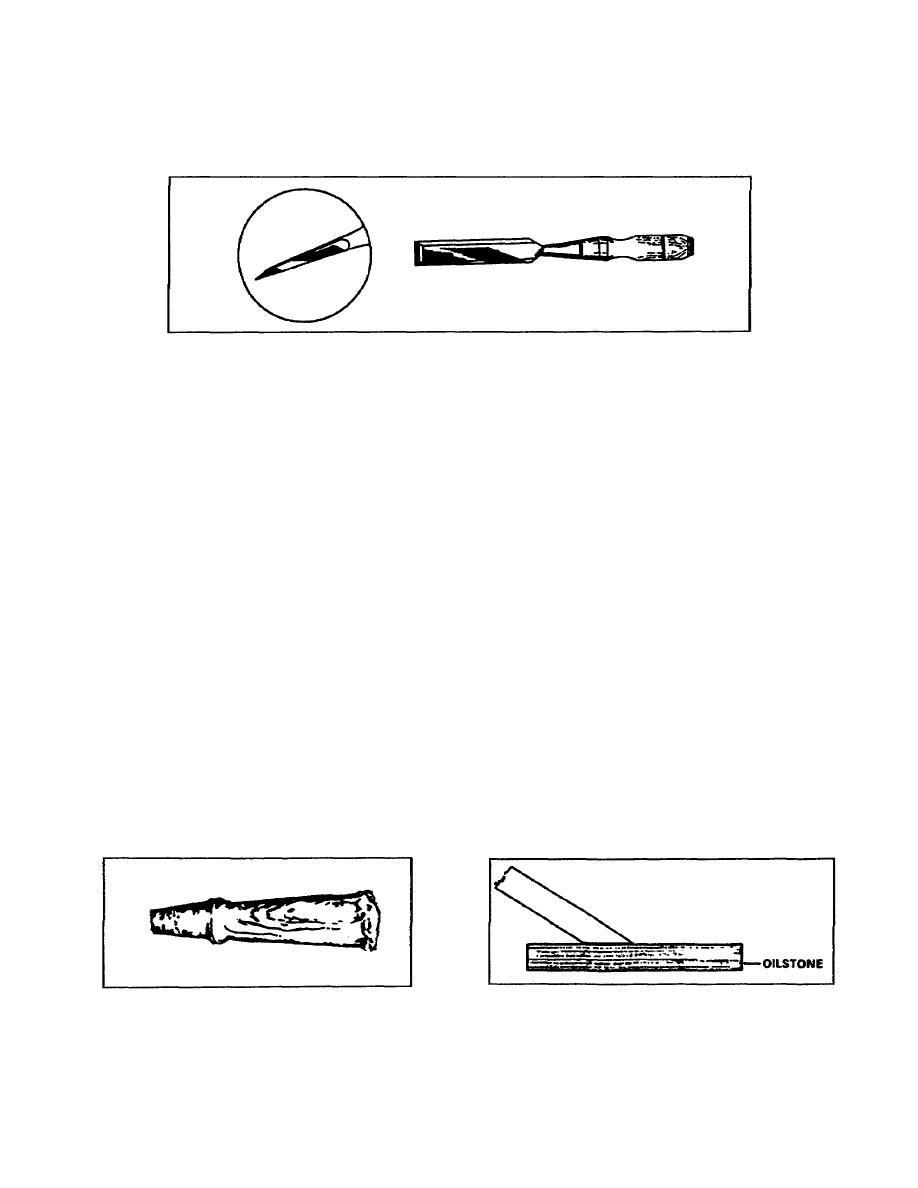
(3) Framing Chisel. A framing (or mortise) chisel (Figure 2
19) is a heavyduty tool, which is used for heavy work. These
chisels have an iron ring fitted to the end of the handle to prevent
splitting when it is struck with a heavy mallet.
Figure 2-19.
Framing chisel
(4) Slick Chisel. Any chisel having a blade wider than 2
inches is called a slick chisel. Regular sizes range from 2 1/2 to 4
inches. They are used on large surfaces where there is considerable
material to be removed or where unusual power is required.
b. Care and Use of SharpEdged Cutting Tools. For most effective
use, keep all chisels properly ground and sharp. When chisels are
not being used, keep them in a toolbox or other approved storage
place such as a rack, to prevent dulling or nicking the cutting
edges. To prevent rusting during storage, coat the metal portion of
the chisel with light oil.
(1) Replacing the Wood Chisel Head. A wood chisel with a
mushroomed head (Figure 220) should be replaced immediately, because
a mallet can glance off its mushroomed surface easily and spoil the
work surface or cause injury.
NOTE: A slightly battered wood handle can be smoothed with a wood
rasp and sandpaper.
(2) Whetting the Cutting Edge. The cutting edge of the wood
chisel can be kept in shape by whetting it on an oilstone (Figure 2
21), unless its edge is nicked or the bevel has become too rounded
with careless whetting. In this case, the chisel must be ground,
taking care the bevel is ground straight. Keep the length of the
bevel about two times the thickness of the unbeveled part of the
blade.
Figure 2-21. Whetting a chisel
Figure 2-20.
Mushroomed chisel
cutting edge
head
EN5155
2-10


 Previous Page
Previous Page
